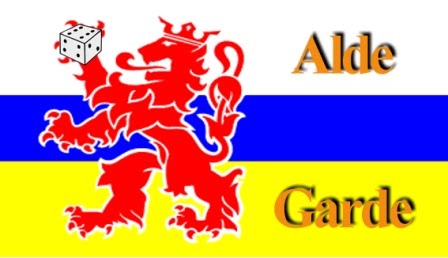Dutch "national" regiments had two flags per battalion.
Not known is if each battalion had a colonels flag and one regimental flag but probably the first battalion had one colonels and one regimental flag; the second battalion two regimental. This was usual in most other countries.
In practice this doesn't matter for the 1793-1795 period as national regiments had just one battalion in the field (1793 of 8 companies, 1794/1795 of 6 companies) which, again, probably means this battalion had the colonels and the regimental flag.
What is known of the colonels flag is, that most had the coat of arms of the paying province or if the regiment was connected to House of Orange the colonels flag had a coat of arms connected to the House of orange (eg the three Nassau-Orange regiments).
As some of the colonels colours are in the public domain (site of the Rijksmuseum Amsterdam) some known colonels colours are underneath with a remark of the regiments which had those colours.
As mostly only one colonels flag per province is known, it is of course possible that different designed provincial colours were used.
For dating and description I used the information in the book "Vlaggen, vaandels & standaarden van het Rijksmuseum Amsterdam" by M. v.d. Brandhof which book ahs pictures of the flags but sadly only in black/white.
Regarding the measurements of the flags; in the reglement of the the 28th of February 1772 is stated that new flags should be square with each side in „Rijnlandse“ measurements 3 Voet and
2 Duim (a voet = 31,4 cm, a duim = 2,61 cm) so the flags should be 99,42 cm
square (or approx 1 metre square).
I have given underneath the measurements of each flag in the Rijksmuseum and they are almost of this size.
Starting with the colonelsflag of Nassau-Orange regiments. There are two flags in the collection of the rijksmuseum.
As there were three regiments (nr I, nr II and nr III which later received the name Erfprins) I think they all had the same colonels flag but maybe different coloured regimental ones.
Regarding the flags, both sides are the same and the background of both flags is ecru or off-white but probably original white. The first one is 105*98 cm; the second one 108*96 cm.








No comments:
Post a Comment